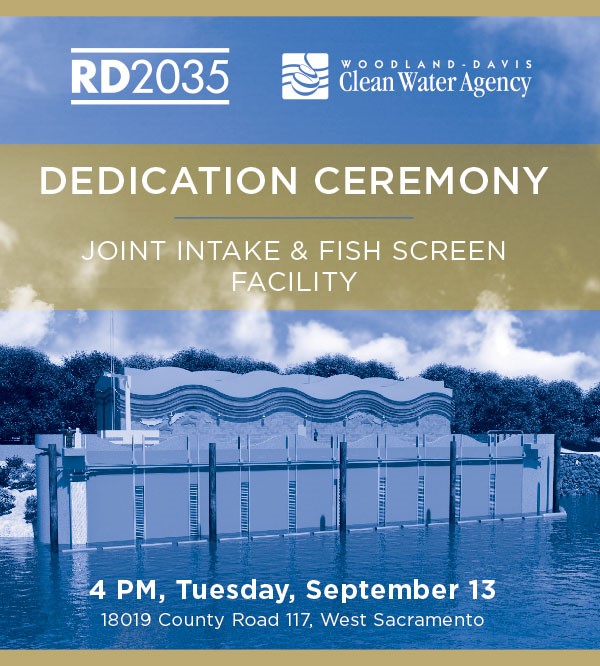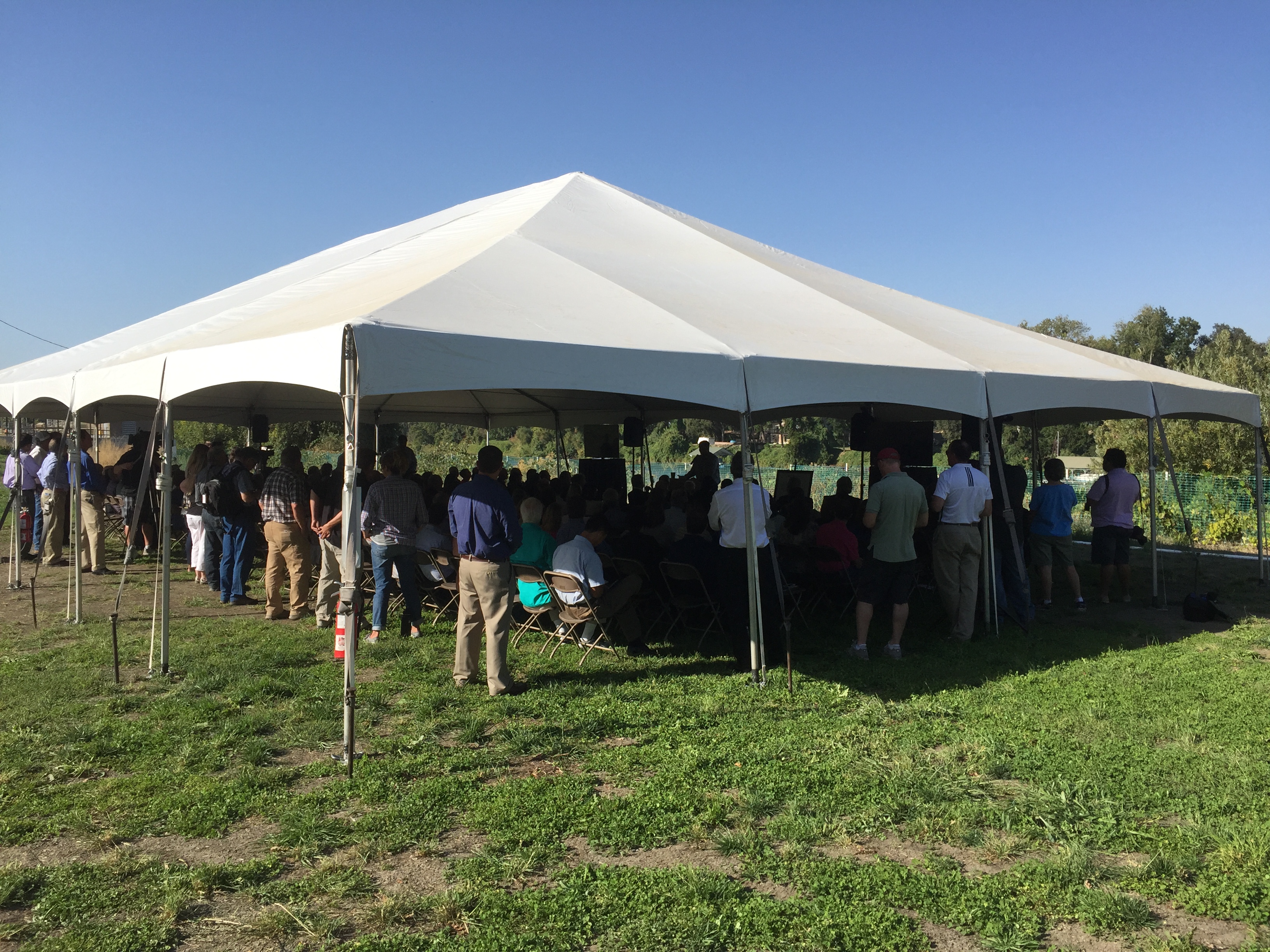Yesterday afternoon, various elected officials, water resources managers, landowners and representatives from state and federal water management and fishery agencies gathered on the Sacramento River in Yolo County to celebrate the completion of the Reclamation District 2035 (RD 2035) and Woodland-Davis Clean Water Agency (WDCWA) combined diversion and fish screen facility.
Joining in the celebration were bi-partisan members of the California Congressional Delegation, who sent a congratulatory letter to RD 2035 and the cities of Davis and Woodland. “This dedication today showcases the extraordinary efforts that are underway in the Sacramento Valley to innovatively manage our precious water resources—both surface and groundwater–for multiple benefits, including the wonderful cities and rural communities, farms, birds, fish and recreation that grace this region. We laud the tremendous partnerships and collaboration that we are seeing throughout the region and hope that this will serve as a model for similar endeavors.”
This project screened the largest remaining unscreened diversion on the Sacramento River. With its completion, over 90 percent of the water diverted off of the Sacramento River travels through state-of -the-art fish screens. Two high-priority fish screen projects remain on the Sacramento River, the Meridian Farms Water Company Fish Screen Project and the Natomas Mutual Water Company’s American Basin Fish Screen and Habitat Improvement Project. With the completion of these projects, both of which have finished design and environmental documentation and are ready to enter into construction once funding is secured, all of the high-priority (as determined by the state and federal fisheries agencies) diversions in the Sacramento Valley will have been screened.
The RD 2035/WDCWA Joint Fish Screen/Intake Project is a combined 400 cubic-feet per-second diversion on the Sacramento River, replacing a pumping facility that is nearly 90 years old. This new facility allows RD 2035 to continue diverting water while allocating a portion of their historic diversion to the cities of Davis and Woodland, augmenting their current groundwater supplies and improving water quality for the communities. The new facility will allow for year-round diversions for the communities as well as water supplies that provide habitat benefits to species of birds using the Pacific Flyway, all while ensuring that salmon are able to migrate up and down the Sacramento River safely past this diversion.
In the Sacramento Valley, the screening of all of the high priority diversions is bringing to an end a program that to protect anadromous fish in the region. Recognizing that this program was reaching a successful conclusion, five years ago water resources managers in the region began efforts to initiate the next phase of salmon recovery in the region. Building upon the success of the Sacramento Valley Fish Screen Program, the Sacramento Valley Salmon Recovery Program is now well underway with the next generation of projects and partnerships to promote salmon recovery in the region.
Cumulatively, these actions – fish screens and the new generation of salmon recovery projects – are being constructed by water management entities in the Sacramento Valley to improve habitat, passage and nourishment for all salmon life cycle stages that occur in the region. This is part of an overarching goal in the Sacramento Valley to manage water resources in a sustainable manner for fish, birds, and other terrestrial species, while serving water for local communities and farms.





